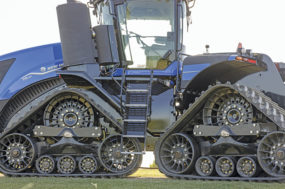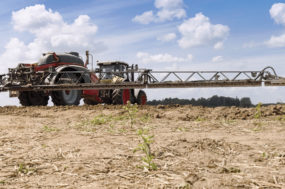The drought of 2012 has been one of the worst on record, leaving many livestock producers short on hay and silage supplies. The lack of substantial rainfall, extreme heat and dryness left many producers looking for any alternative forages they could plant to make up for the shortages, Mark Sulc said.
As a result, some chose to grow sudangrass, sudangrass hybrids, forage sorghums or sorghum-sudangrass crosses, which can produce excellent forage yields in a short time but are capable of becoming toxic to livestock after a frost event, Sulc said.
These species contain compounds called cyanogenic glucosides that convert quickly to prussic acid in freeze-damaged plant tissue.
"Animals can die within minutes if they consume forages such as the sorghum species that contain high concentrations of prussic acid in the plant tissue soon after a frost," Sulc said. "Ruminants are more susceptible to prussic acid poisoning than horses or swine because cud chewing and rumen bacteria help release the cyanide from plant tissue."
The signs of prussic acid poisoning appear rapidly after the animal eats forage high in prussic acid content, because it interferes with oxygen transfer in the blood stream of the animal, causing it to die of asphyxiation. Symptoms include staggering, labored breathing, spasms, foaming at the mouth and convulsions.
The concern is growing now since some parts of (the country) already have experienced frost.
Making hay and silage from these forages after a frost reduces the risk of poisoning, Sulc said, because prussic acid in the plant decreases during the wilting and hay-drying process.
But hay or silage that are not properly cured and dried before bailing or ensiling should be tested for prussic acid before feeding them to livestock, he said.
"Because prussic acid is a gas, the longer the gas has to dissipate out of the plant, the less it is dangerous for livestock," Sulc said.
Other tips farmers can use to avoid prussic acid poisoning include:
• Don't graze on nights when frost is likely. High levels of the toxic compounds are produced within hours after a frost.
• Don't graze after a killing frost until plants are dry, which usually takes five to seven days.
• After a non-killing frost, do not allow animals to graze for two weeks because the plants usually contain high concentrations of toxic compounds.
• New growth may appear at the base of the plant after a non-killing frost. If this occurs, wait for a hard, killing freeze, then wait another 10 to 14 days before grazing the new growth.
• Don't allow hungry or stressed animals to graze young growth of species with prussic acid potential.
• Graze or green chop sudangrass only after it is 18 inches tall. Sorghum-sudangrass should be 30 inches tall before grazing. Never graze immature growth.
• Don't graze wilted plants or plants with young tillers.
• Green chopping the frost-damaged plants will lower the risk compared with grazing directly because animals will be less likely to selectively graze damaged tissue. However, the forage can still be toxic, so feed green chop with great caution after a frost.
• Feed green-chopped forage within a few hours and don't leave it in wagons or feed bunks overnight. FG
—From Ag Answers newsletter, September 2012









